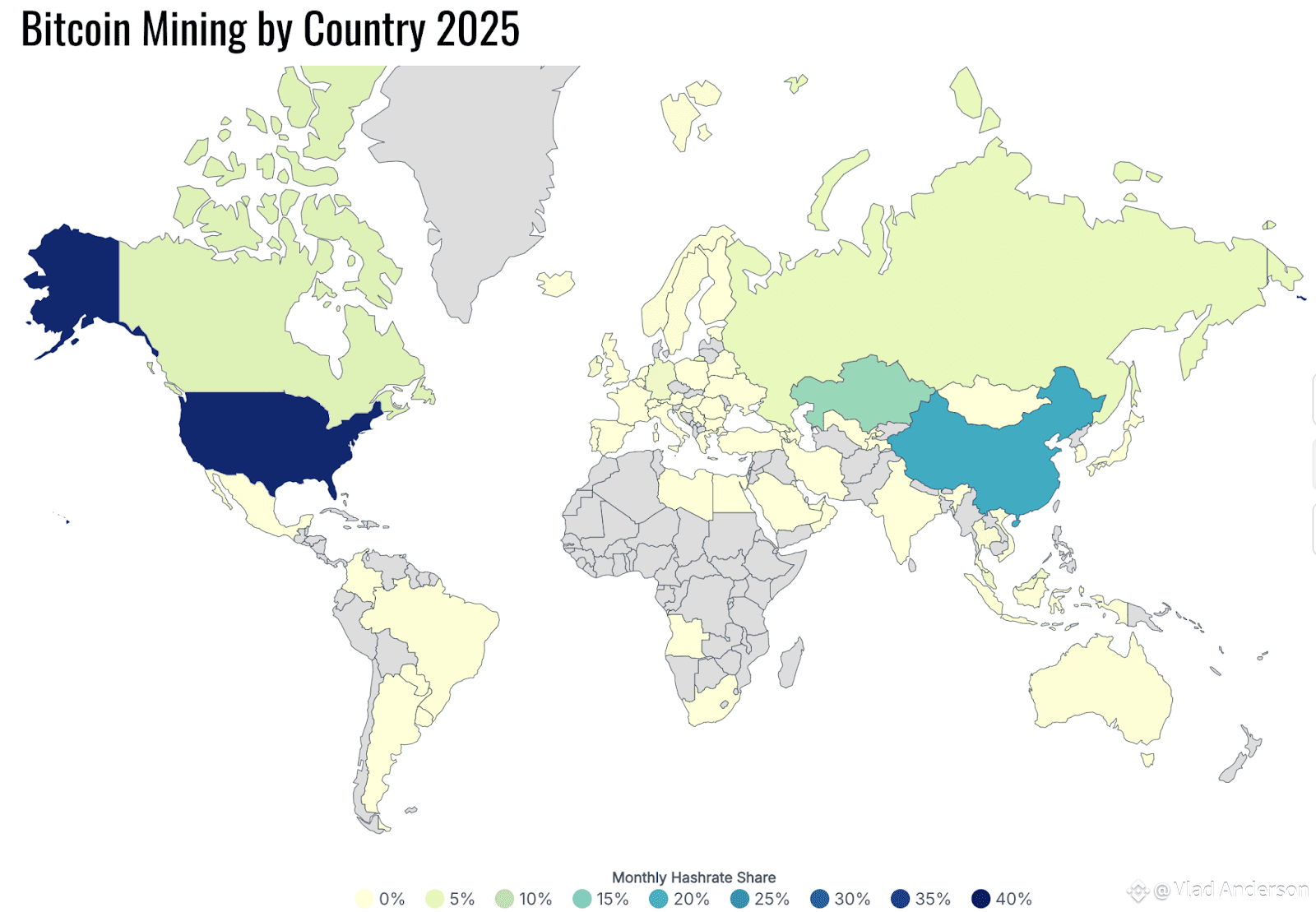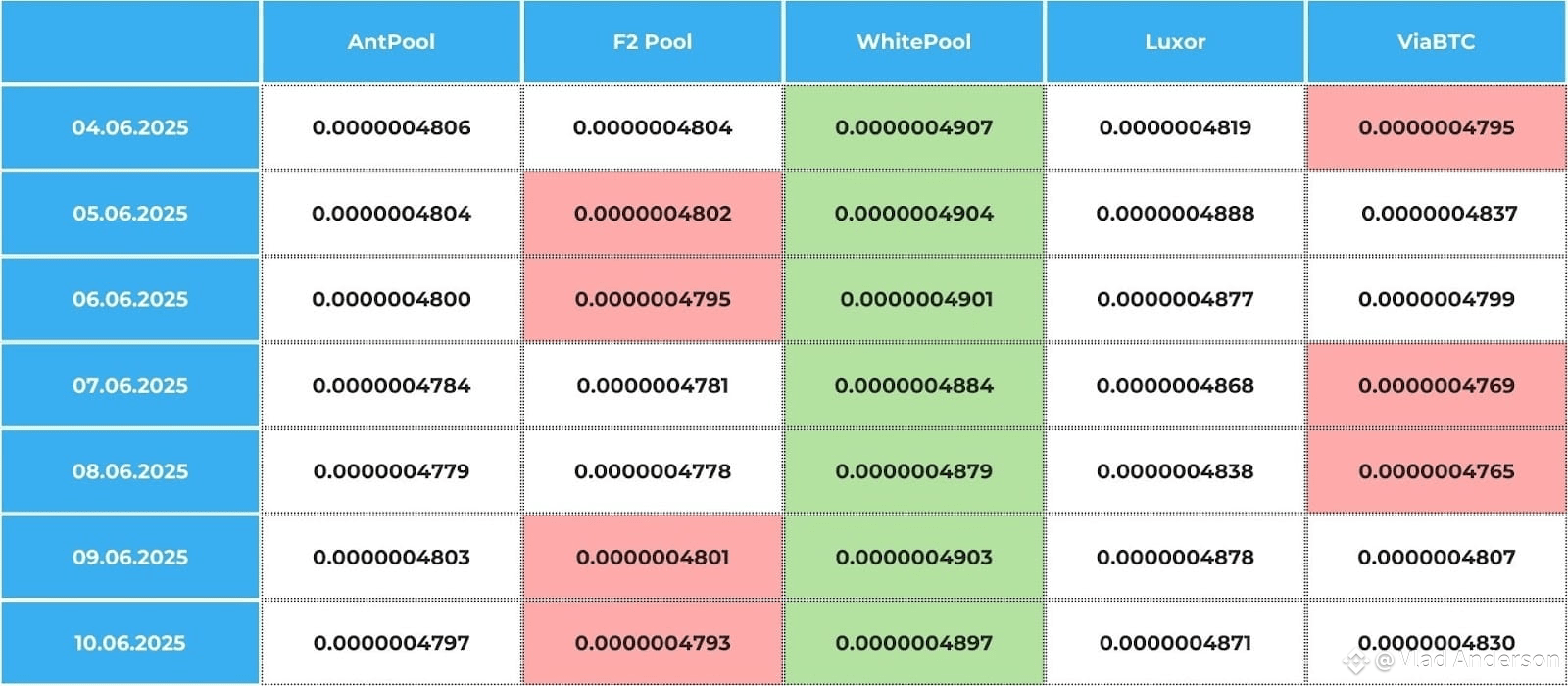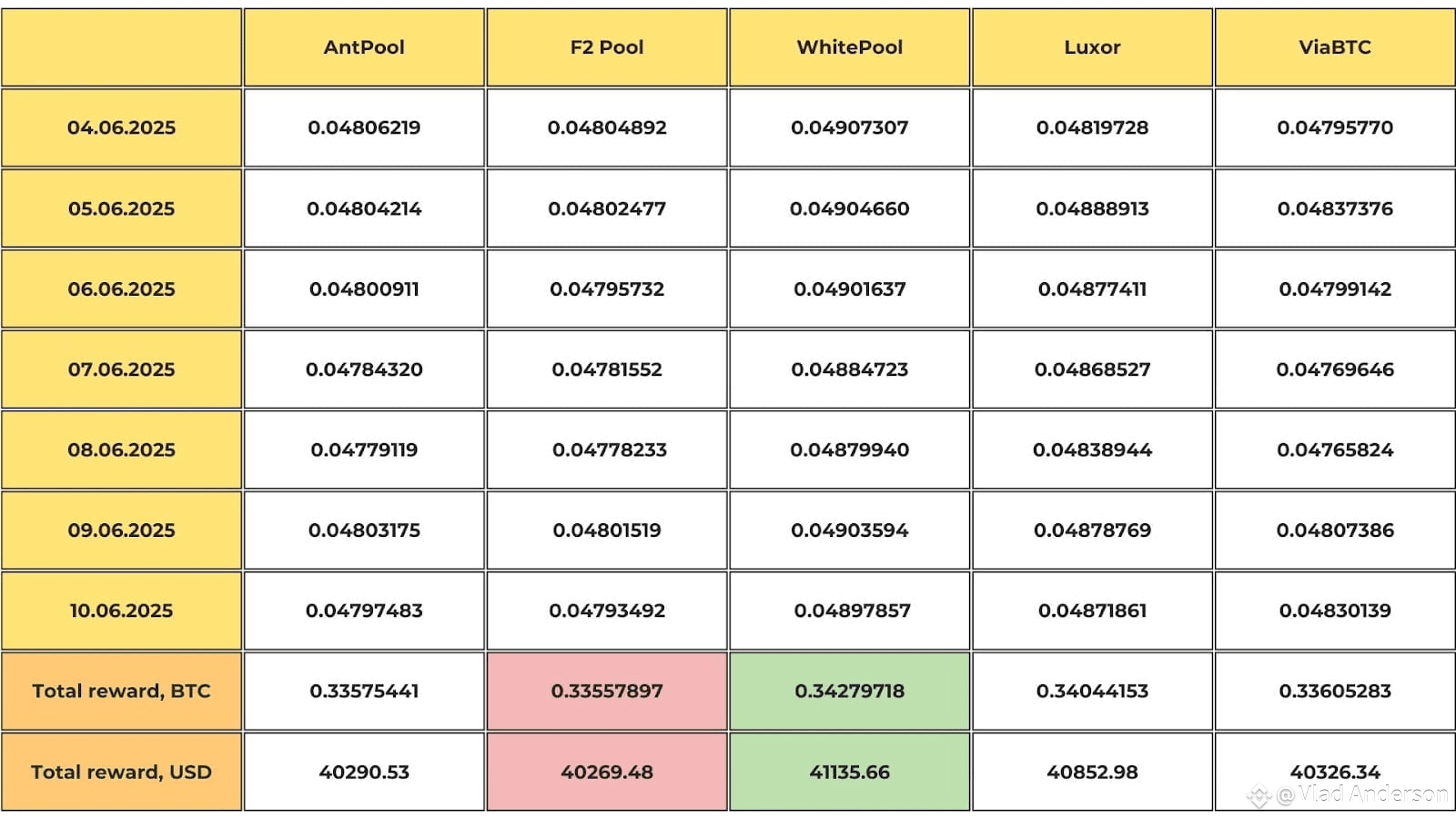Mining today consumes about 1% of the world's electricity. Volodymyr Nosov, president and founder of WhiteBIT Group, pointed this out on his Instagram. The figure sounds impressive, and indeed, the Bitcoin network consumes as much energy as a small country.
This inevitably raises the question: if mining “eats up” such resources, does it justify itself in terms of profitability? Recently, WhiteBIT conducted an experiment comparing the hashrate of different mining pools in real-world conditions. I analyzed their results and added my opinion based on my own mining experience.
Why Speed Alone Won’t Make You a Successful Miner
Hashrate is the speed at which the hardware performs calculations to find a new block on the network. The higher it is, the higher the chances of getting a reward, but it is worth considering that competition among miners is also growing. In particular, according to the World Population Review, the leaders in bitcoin mining by country and their hash rates are the United States (37.84%), China (21.11%), and Kazakhstan (13.22%).

Source: 'Bitcoin Mining by Country 2025' - World Population Review
It is important to understand that the profit is influenced not only by the technical capabilities of the equipment but also by the operating conditions of the network itself: the complexity of mining (which is adjusted every two weeks), the current reward per block (currently 3,125 BTC after the 2024 halving), the cost of electricity, and the coin rate in the market.
How profitable mining is can be judged by the hashprice, i.e. how much profit one terahash of power brings per day. It depends on several factors, such as the BTC price, transaction fees, network difficulty, and the chosen pool. Moreover, the choice of a pool is no less important: the fee (usually 0.5-4%), payment model (PPS, FPPS, PPLNS), and additional services can significantly affect the final result.
However, even a high hashrate does not guarantee a stable income, as it is influenced by both external factors, such as the price of BTC and network activity, and internal factors, such as equipment efficiency, uninterrupted operation, and pool selection strategy. That is why professional miners constantly monitor the market and customize their equipment to maximize the benefits of the hashprice and stay in the black.
WhiteBIT Compares Mining Pools: How Small Differences Translate to Big Gains
To check the real profitability of different mining pools, WhiteBIT conducted a week-long test on the same hardware - Antminer S21 - and default fees for five pools - AntPool, F2Pool, WhitePool, Luxor, ViaBTC. In my opinion, for a more complete picture, it would be worth testing at least a dozen pools: they differ not only in hashrate but also in functionality, and this could give even more profound conclusions. However, this experiment turned out to be quite revealing.
To calculate the hashprice, the company used the following formula:
Hashprice = (reward - pool fee) / average daily hashrate

The results were unambiguous: WhitePool was confidently leading all seven days, outperforming its competitors by ≈1.73%. F2 Pool most often finished last - 4 times out of 7. AntPool and Luxor were closer to the middle, although Luxor consistently took second place and ViaBTC occasionally fell below average.

To better visualize the financial benefits, the company modeled the situation for a hypothetical miner with a performance of 100 PH/s. In this case, WhitePool would bring in 0.34279718 $BTC (~$41,135.66) per week, which is $282 more than its closest competitor (Luxor) and $866 more than the least profitable pool (F2 Pool). At first glance, the difference in the fraction of a percentage seems insignificant, but with high throughput and long-term operation, it turns into a tangible bonus.
Another important point is stability. WhitePool has never dropped from first place, Luxor has almost always been second, and the other three pools have been constantly changing places with a small gap of 0.0000002-0.0000005 BTC/PH/day. The largest gap between the first and last place was recorded on June 7 - 0.00000177 BTC/PH.
From Setup to Profit: A Personal Test of WhitePool’s Performance
Interestingly, even before WhiteBIT published their official experiment, I had experience with WhitePool. My goal was to check the real profitability and evaluate how the pool works in real conditions.
For the test, I used Antminer S21 with a hashrate of 200 TH/s. Setting up the hardware turned out to be quite fast and took about an hour. After that, the miner began to issue hashes steadily, and WhitePool demonstrated high stability: no downtime, lags, or connection problems. The pool interface is simple and user-friendly, which made it easier to control income.
I kept a daily profit record and received approximately $10.38 per day. It took me about 58 days to earn $600. Compared to other pools that looked more attractive on paper, WhitePool impressed me with its reliability and stability, a factor that is critical for me in long-term mining.
Final Takes
Mining remains a balance between speed, strategy, and stability. WhiteBIT's experiment, backed by my personal test, shows that even small differences in pool performance can lead to significant gains over time. In the end, stable uptime, transparent fees, and user-friendly management matter just as much as raw hashrate. For those considering mining today, the key takeaway is clear: it's not just about how much hashrate you have, but also how wisely you choose a pool and manage its settings.
